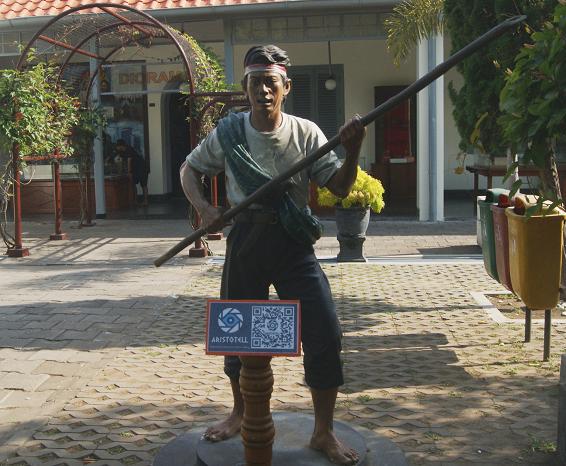The tourist city of Yogyakarta is a source of inspiration for many
things, apart from culture, art and history. The history of the city of
Yogyakarta is very thick with the existence of the Yogyakarta Mataram
Sultanate, the Dutch existence in the past, and the history of the
archipelago kingdoms that once existed in this City of Education.
 |
Yogyakarta Vredeburg Fortress Building Gate which is now the Education Museum
|
One of the relics of the past in
Yogyakarta is the Vredeburg fortress, which is located on Jalan Margo
Mulyo No. 6 Yogyakarta City which now functions has turned into an
education museum. This location is directly opposite to Gedung Agung and
the Sultan's Palace.
 |
The entrance ticket to Yogyakarta Vredenburg Fort is only Rp. 3,000, - only.
|
In addition, Vredeburg fort is also close
to other historical buildings such as the BNI 1946 building, the Post
office building, the Bank Indonesia building and the Societeit
Militaire. It is strategically located at the zero kilometer point of
the city center of Yogyakarta.
 |
Inside of Yogyakarta Vredeburg Fortress
|
The Vredeburg building was not originally
named Vredeburg as it is today. The fort was built by Sri Sultan
Hamangku Buwono I in 1760 at the request of the Dutch who at that time
was at the time of the Governor General of the North Coast of Java named
Nicolaas Harting.
 |
Fort Vredeburg on the inside with antique buildings.
|
The initial aim of Sri Sultan
Hamengkubuwono I's intention was to maintain the security of the palace
palace and the city of Yogyakarta, but it turned out that the Dutch took
this opportunity to become a place to facilitate Dutch control over
Yogya City.
 |
There are many remains in Vredeburg Fort Yogyakarta.
|
The initial construction of the Vredeburg
building was only made of concrete walls made of earth with coconut
wood pillars in a square shape, added with each corner of the building
in the form of a bastion or guard station.
 |
Statue of the Fighters of the Republic of Indonesia
|
Then in 1767 during the Governor General
H.W. van Ossenberg began making building changes to be more permanent on
the budget of the VOC. The construction was under the supervision of a
Dutch engineer, Ir. Frans Haak.
The process of building
this fort took a very long time, which is almost 20 years, so it was
only completed in 1787. In that year it was also inaugurated and was
given the name 'Rustenberg' which means a resting place. In the past,
many high-ranking Dutch East Indies, either in the city of Yogya or from
Batavia and from the Netherlands, when visiting Yogya always used Fort
Rustenburg as a resting place.
In 1867 there was a big
earthquake in Yogyakarta which damaged many buildings in the City of
Yogya and its surroundings, including part of the Rustenberg fort that
was damaged. After the damage to the building was repaired, the name of
this fort was changed to Fort Vredeburg which means peace.
 |
Statue of General Sudirman in Vredeburg Fortress which was made after the Indonesian Independence period.
|
Now Fort Vredeburg has functioned as an educational
museum managed by the Yogyakarta Provincial Government of the Yogyakarta
Provincial Government of the Fort Vredeburg Museum. This museum
conveys a variety of information, such as history, culture, art and
various other educational elements for the younger generation and is
also a fun recreation area especially for children. Various
presentations in this museum are in an educational and entertainment
format.
Referensi : - vredeburg.id
- wikipedia.org
- Etc.
Tag. :
Vredenberg, Yogya City, Yogyakarta, Musium Benteng Vredenberg, Musium, Benteng Vredenberg






